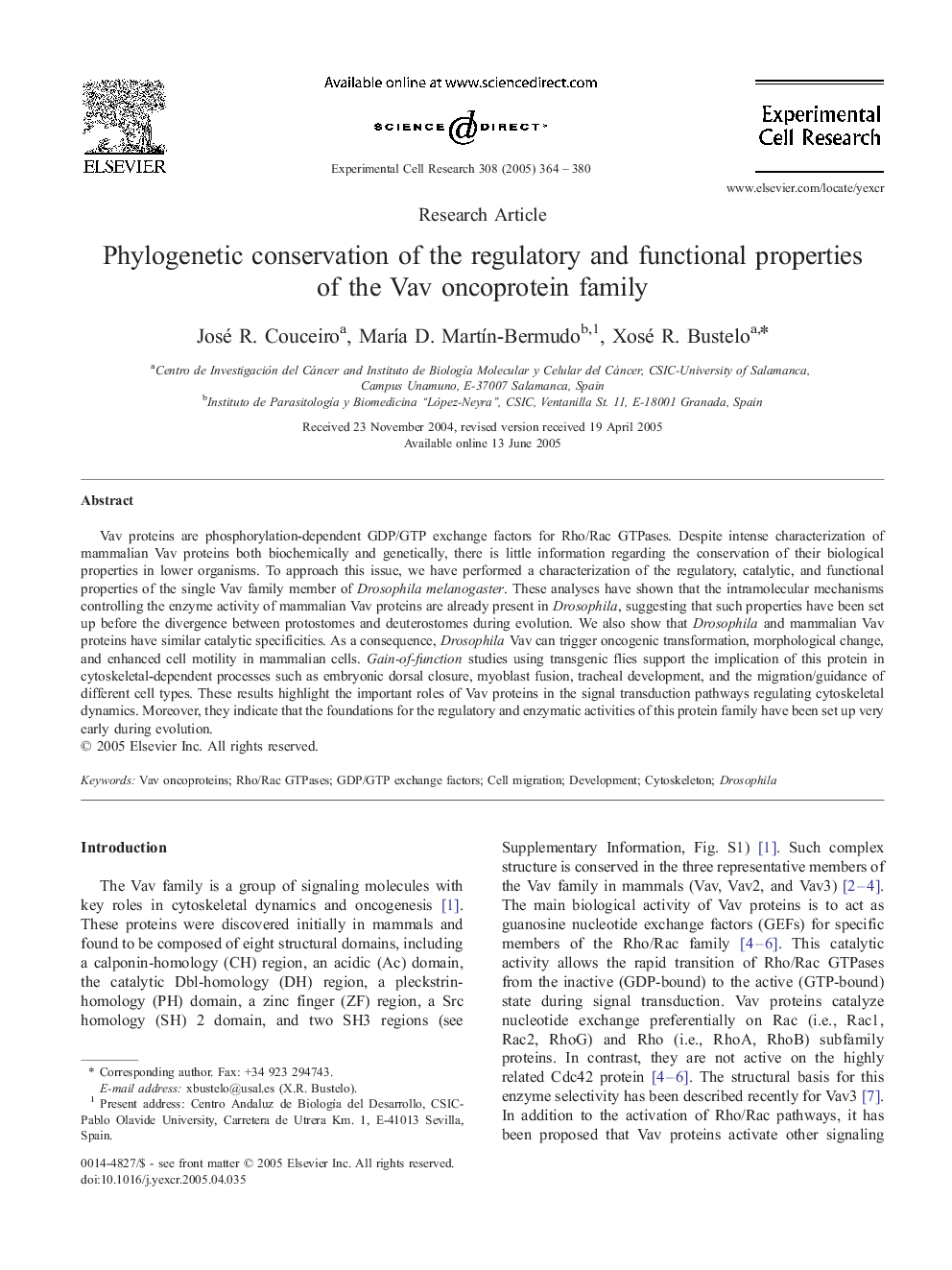| کد مقاله | کد نشریه | سال انتشار | مقاله انگلیسی | نسخه تمام متن |
|---|---|---|---|---|
| 10904927 | 1086708 | 2005 | 17 صفحه PDF | دانلود رایگان |
عنوان انگلیسی مقاله ISI
Phylogenetic conservation of the regulatory and functional properties of the Vav oncoprotein family
دانلود مقاله + سفارش ترجمه
دانلود مقاله ISI انگلیسی
رایگان برای ایرانیان
کلمات کلیدی
موضوعات مرتبط
علوم زیستی و بیوفناوری
بیوشیمی، ژنتیک و زیست شناسی مولکولی
تحقیقات سرطان
پیش نمایش صفحه اول مقاله

چکیده انگلیسی
Vav proteins are phosphorylation-dependent GDP/GTP exchange factors for Rho/Rac GTPases. Despite intense characterization of mammalian Vav proteins both biochemically and genetically, there is little information regarding the conservation of their biological properties in lower organisms. To approach this issue, we have performed a characterization of the regulatory, catalytic, and functional properties of the single Vav family member of Drosophila melanogaster. These analyses have shown that the intramolecular mechanisms controlling the enzyme activity of mammalian Vav proteins are already present in Drosophila, suggesting that such properties have been set up before the divergence between protostomes and deuterostomes during evolution. We also show that Drosophila and mammalian Vav proteins have similar catalytic specificities. As a consequence, Drosophila Vav can trigger oncogenic transformation, morphological change, and enhanced cell motility in mammalian cells. Gain-of-function studies using transgenic flies support the implication of this protein in cytoskeletal-dependent processes such as embryonic dorsal closure, myoblast fusion, tracheal development, and the migration/guidance of different cell types. These results highlight the important roles of Vav proteins in the signal transduction pathways regulating cytoskeletal dynamics. Moreover, they indicate that the foundations for the regulatory and enzymatic activities of this protein family have been set up very early during evolution.
ناشر
Database: Elsevier - ScienceDirect (ساینس دایرکت)
Journal: Experimental Cell Research - Volume 308, Issue 2, 15 August 2005, Pages 364-380
Journal: Experimental Cell Research - Volume 308, Issue 2, 15 August 2005, Pages 364-380
نویسندگان
José R. Couceiro, MarÃa D. MartÃn-Bermudo, Xosé R. Bustelo,